“Holiness, a universal vocation that we can all attain”
Audience to the participants at the Study Conference promoted by the Dicastery for the Causes of Saints
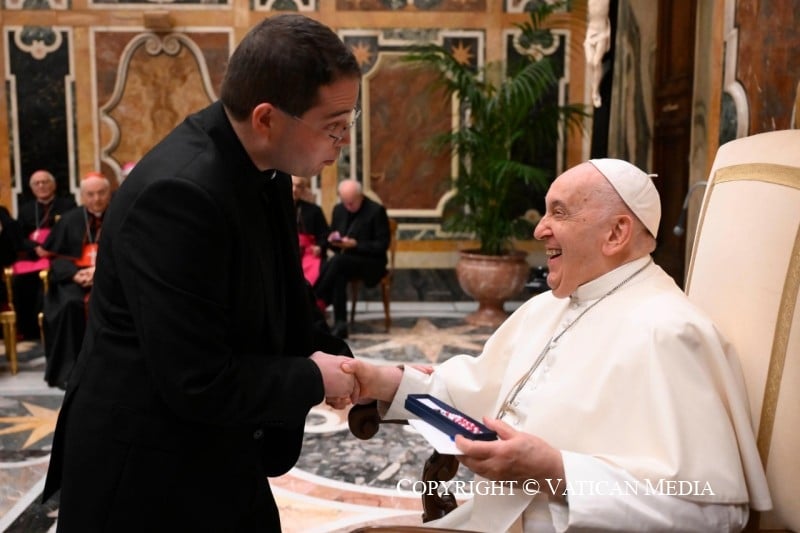
This morning, in the Vatican Apostolic Palace, the Holy Father Francis received in Audience the participants at the Study Conference “Community Dimension of Holiness” promoted by the Dicastery for the Causes of Saints, being held in Rome, at the Augustinianum Patristic Institute, from 13 to 16 November 2023.
In his address, the Pope stressed the importance of communitarian holiness, that is, holiness lived in communion with others.
The Pope began his address by recalling that holiness is a gift from God that all Christians are called to live. However, holiness is not an individual goal, but a communitarian one.
The Pope explained that communal holiness is based on communion with God and with others. Communion with God is fundamental to holiness because it is the source of life and love. Communion with others is also fundamental because it is in community that Christians learn to love God and others.
The Pope emphasised that communal holiness is expressed in daily life, in family relationships, work, prayer, and mission. Community holiness is a way of living the Gospel in today’s world.
We publish below the speech that the Pope addressed to those present during the Audience:
Address of the Holy Father
Dear brothers and sisters, welcome!
I greet you with joy at the end of the conference on the theme The communitarian dimension of holiness, organized by the Dicastery for the Causes of Saints. I thank Cardinal Marcello Semeraro, the other Superiors, the officials, the postulators, Msgr. Paglia – who is in heaven, on earth, everywhere! -, participants in the work of these days.
You have given me the commentary on the Apostolic Exhortation Gaudete et exsultate, published by the Dicastery on the tenth anniversary of my pontificate. Thank you from my heart! I hope that the reflections contained in the book will help many people to understand ever better the universal call to holiness.
This theme of the universal call to holiness, and within it, its communitarian dimension, is very dear to Vatican Council II, which spoke about it specifically in Lumen gentium (cf. Chapter V). It is not a coincidence, in this regard, that in recent years there has been an increase number of beatifications and canonizations of men and women belonging to different states of life: married men and women, the celibate, priests, consecrated women and men and laypeople, families – think of the martyrs of Poland – of every age, origin and culture. In particular, in Gaudete et exsultate I wished to draw attention to the fact that all these brothers and sisters belong to the “holy faithful people of God” (no. 6); as well as to their closeness to us, as saints “next door” (no. 7), members of our communities, who have lived with great charity in the small things of daily life, even with their limitations and faults, following Jesus to the end. Therefore, I would now like to reflect with you on this very theme, highlighting three aspects of it, among the many possible: holiness that unites, family holiness and martyrdom. Holiness that unites, family holiness and martyrial holiness.
First: holiness that unites. We know that the vocation to which we are all called is fulfilled first of all in charity (cf. Lumen gentium, 40), which is a gift of the Holy Spirit (cf. Rom 5:5) that unites us in Christ and with our brothers and sisters: therefore, it is not merely a personal event, but also a communitarian one. When God calls the individual, it is always for the good of all, as in the cases of Abraham and Moses, Peter and Paul. He calls the individual for a mission. And after all, just as Jesus, the Good Shepherd, calls each of His sheep by name (cf. Jn 10:3) and seeks out the lost one to bring it back into the fold (cf. Lk 15:4-7), so the response to His love cannot but take place in a dynamic of involvement and intercession. The Gospel shows us this, for example for Matthew who, as soon as he is called by Jesus, invites his friends to meet the Messiah (cf. Mt 9:9-13) or for Paul who, having met the Risen One, becomes the Apostle to the Gentiles. An encounter with Jesus has this communitarian dimension.
This reality is expressed in a particularly touching way by Saint Thérèse of the Child Jesus, to whom, on the 150th anniversary of her birth, I dedicated the Apostolic Exhortation C’est la confiance. In her writings, she contemplates the whole of humanity with an evocative biblical image as the “garden of Jesus”, whose love embraces all its flowers in a way that is both inclusive and exclusive (cf. Manuscript A, 2rv), and asks to be enflamed to the point of incandescence by the fire of such love, so as to lead all her brothers and sisters to it in turn (cf. Manuscript C, 34r-36v). This is evangelization “by attraction” (Apostolic Exhortation Evangelii gaudium, 14), it is witness: it is a fruit at the same time of the highest mystical experience of personal love and the “’mystique’ of living together” (Apostolic Constitution Veritatis gaudium, 4a). In it, the two modes of the Lord’s presence are interpenetrated, both in the interior of the individual person (cf. Jn 14:23), and in the midst of those gathered in His Name (cf. Mt 18:20); in the “castle of the soul” and in the “castle of the community”, to use an image dear to Saint Teresa of Ávila (cf. The Interior Castle). Holiness unites, and through the charity of the saints we can know the mystery of God who “united Himself […] with every man” (Pastoral Constitution Gaudium et Spes, 22) and embraces the whole of humanity in His mercy, so that all may be one (cf. Jn 17:22). How much our world needs to find unity and peace in such an embrace! We need this…
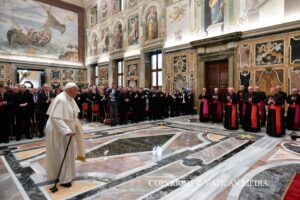 Let us move on to the second point: family holiness. It shines eminently in the Holy Family of Nazareth (cf. Gaudete et exsultate, 143). And yet the Church today offers us many other examples: “In many holy marriages too, each spouse becomes a means used by Christ for the sanctification of the other” (ibid. 141). Let us think of Saints Louis and Zelia Martin; Blesseds Louis and Maria Beltrame Quattrocchi; Venerables Tancredi and Julia of Barolo; Venerables Sergio and Domenica Bernardini. The holiness of spouses, as well as the particular holiness of two distinct persons, is also common holiness in conjugality: hence multiplication – and not mere addition – of the personal gift of each, which is communicated. And a shining example of this was recently offered to us in the beatification, which I mentioned at the beginning, of the married couple Jozef and Wiktoria Ulma and their seven children: all martyrs. They, too, remind us that “growth in holiness is a journey in community, side by side with others” (ibid.), and not alone. Always to be done with the community.
Let us move on to the second point: family holiness. It shines eminently in the Holy Family of Nazareth (cf. Gaudete et exsultate, 143). And yet the Church today offers us many other examples: “In many holy marriages too, each spouse becomes a means used by Christ for the sanctification of the other” (ibid. 141). Let us think of Saints Louis and Zelia Martin; Blesseds Louis and Maria Beltrame Quattrocchi; Venerables Tancredi and Julia of Barolo; Venerables Sergio and Domenica Bernardini. The holiness of spouses, as well as the particular holiness of two distinct persons, is also common holiness in conjugality: hence multiplication – and not mere addition – of the personal gift of each, which is communicated. And a shining example of this was recently offered to us in the beatification, which I mentioned at the beginning, of the married couple Jozef and Wiktoria Ulma and their seven children: all martyrs. They, too, remind us that “growth in holiness is a journey in community, side by side with others” (ibid.), and not alone. Always to be done with the community.
And so we come to the third point: martyrial holiness. It is a powerful model, of which we have many examples throughout the history of the Church, from the original communities up to the modern age, over the course of the centuries and in various parts of the world. There is no period that has not had its martyrs, up to our times. And we think that these martyrs are something that does not exist… but think of a case of Christian life lived in continuous martyrdom: the case of Asia Bibi, who was in prison for many years, and her daughter brought her the Eucharist… And many years passed before the moment when the judges said she was innocent. Almost nine years of Christian witness! She is a woman who continues to live, and there are many, many like her, who bear witness to faith and charity. And let us not forget our time, which has had many martyrs! Often, they are “entire communities that lived the Gospel heroically or offered to God the lives of all their members” (ibid.). And the matter broadens further if we consider the ecumenical dimension of their martyrdom, recalling those who belong to all Christian denominations (cf. ivi., 9). Let us think, for example, of the group of twenty-one Coptic martyrs recently introduced into the Roman Martyrology. They died saying “Jesus”, “Jesus”, “Jesus”, on the beach….
Dear brothers and sisters, holiness gives life to the community, and you, with your work, help us to understand and celebrate its reality and dynamics ever better, in the many and varied paths that you examine and propose for our veneration; different, but all directed towards the same goal: the fullness of love. This is the path of holiness.
I thank you so much for this, and I encourage you to continue your beautiful mission with joy, for the good of individuals and the growth of communities. I bless you from my heart and, please do not forget to pray for me.
Thank you!
__________________________________
Holy See Press Office Bulletin, 16 November 2023
Related

Pope Francis’ Catechesis: The Rich Man. Jesus “Looked at Him with Love”
Exaudi Staff
09 April, 2025
4 min
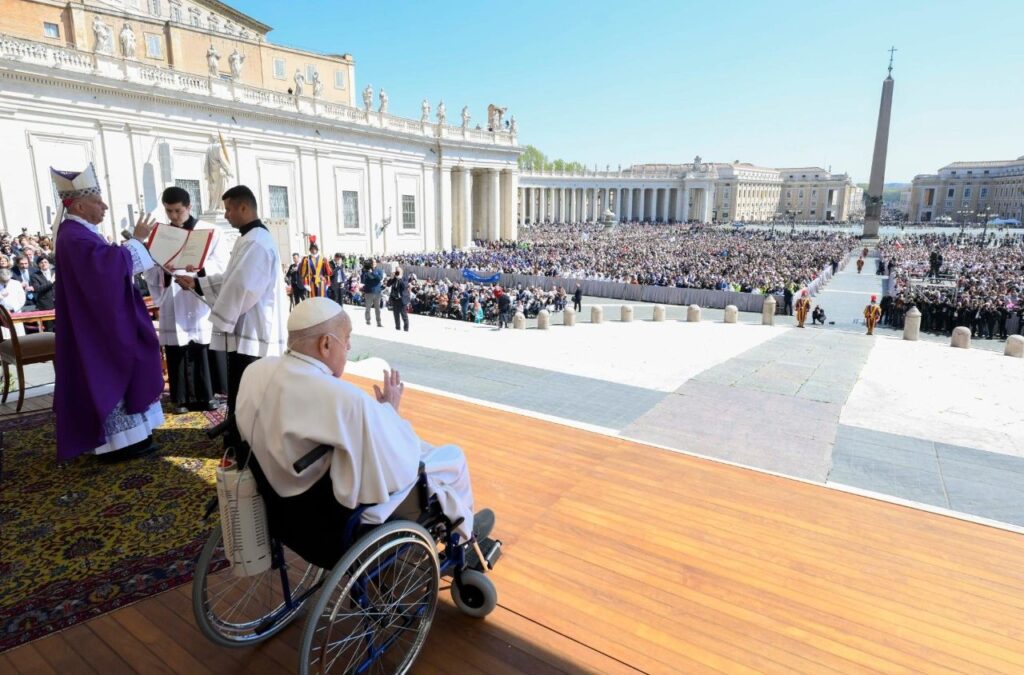
Francis is recovering: progressing progressively
Exaudi Staff
08 April, 2025
2 min
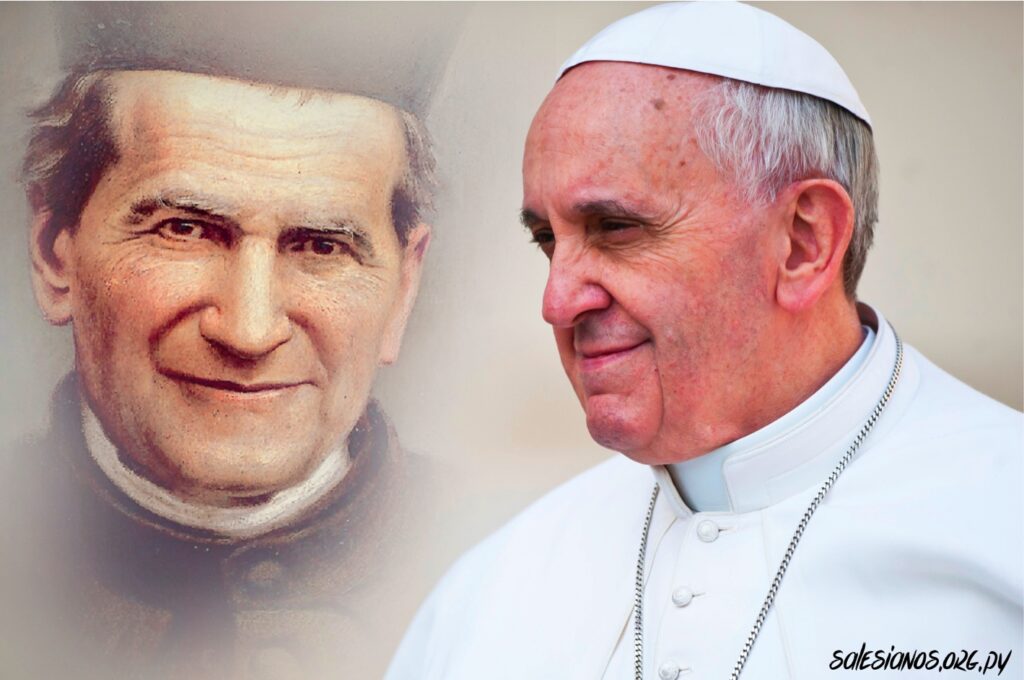
The Pope to the Salesians: “Serve others without holding anything back”
Irene Vargas
07 April, 2025
2 min
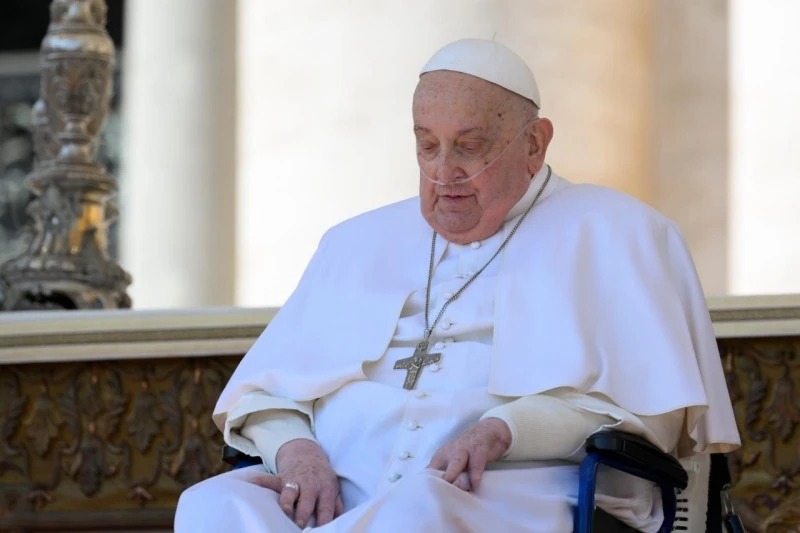
The Pope: In convalescence, I feel the “finger of God” and experience his loving caress
Exaudi Staff
06 April, 2025
2 min
 (EN)
(EN)
 (ES)
(ES)
 (IT)
(IT)

